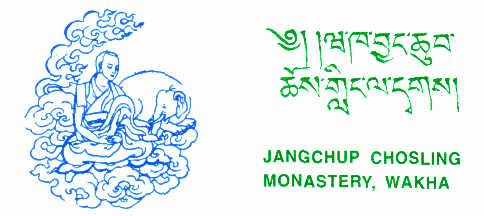Home
Abbot Sonam Palsang
Reports
Photos from 2008
Solidarity
Imprint
deutsche Version

|
Home |

|
Report of Marlene Eltschig (Dharmadakini)
It is now about 13 years ago that I met Geshe Sonam Palzang. But the impression, which it left with me, did not fade. Perhaps it is particularly in the review for me still more amazing, how much it really moved for the nuns.
What I really admire in Geshe La, is his never ceasing energy for the good and his modesty. Instead of being satisfied with his high academic degree and staying in a comfortable job teaching advanced students at the university, he rolled up his sleeves to use a hammer on the nunnery building site. In addition he took it upon himself to work with the less well regarded and uneducated nuns, teaching them so well, that it was noticeable that they could recite far better than the monks from the tiny neighbouring gompa. Geshe Sonam Palzang is to today an important role model for me, an unusually altruistic person and a person I will never forget. Report of Elizabeth Pankhurst (Jayaprabha)When I went to visit Wakhah Jangchup Choeling Nunnery in 2001 it was noticeable to me, how beautiful it was, brightly painted and with lots of flowers (watered daily by the nuns), which gave the feeling of being an oasis in the middle of the dusty desert, which it actually is. I loved to listen to the nuns singing their Tibetan prayers and particularly the youngest, who sang and used their musical instruments with such joyful enthusiasm each day before and after school. There are political tensions in Ladakh and the situation for the Ladakhi people is not without it's dangers. I am very very happy that I was able to meet Geshe Sonam Palsang and his monastry of nuns. To experience first hand how he was dedicating his life to these poor people and the nuns who joined with him in making us feel so welcome. I left with the resolve to help the Geshe in his work in any way I could. Report of Markus HoffmannIn the Autumn of 2001 Elizabeth Pankhurst and Marlene Eltschig talked in a Buddhist centre in Berlin about their experiences in a Ladakhi nunnery. After that I so dearly wanted to meet the Geshe Sonam Palsang and was able to during my first India journey in the winter of 2001/2002 I visited a Monastry in Mundgod in South India, where the Geshe regularly taught the monks. |